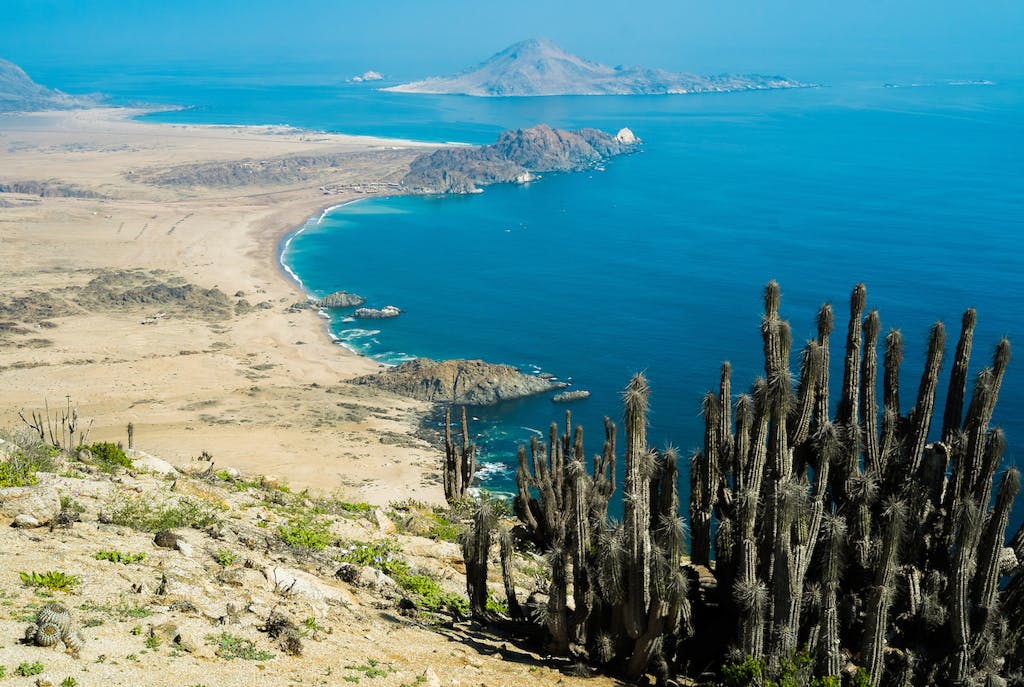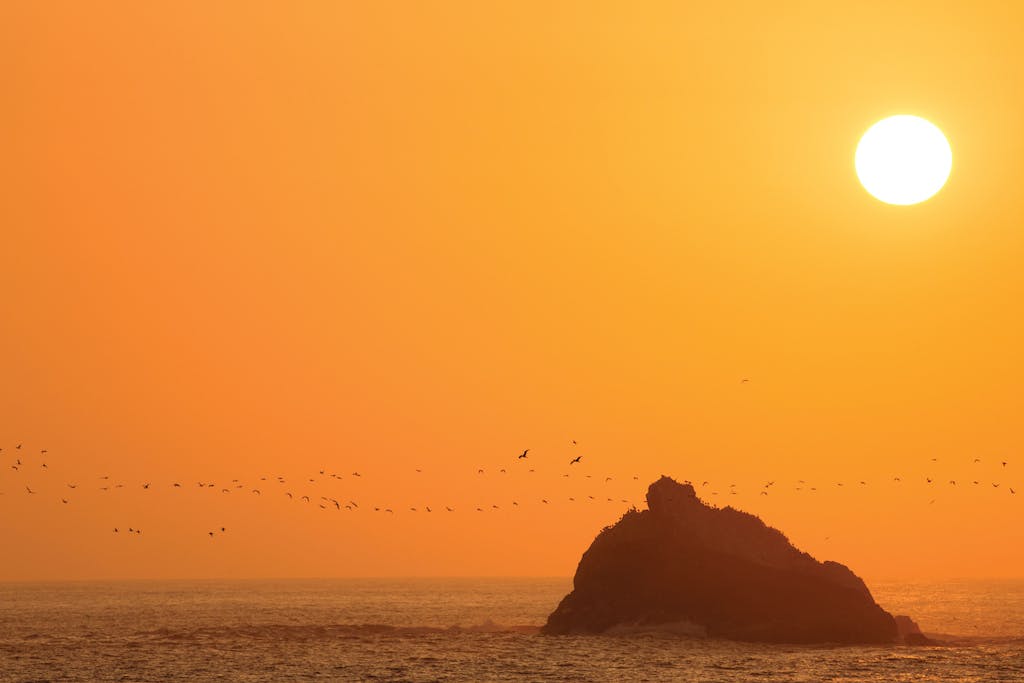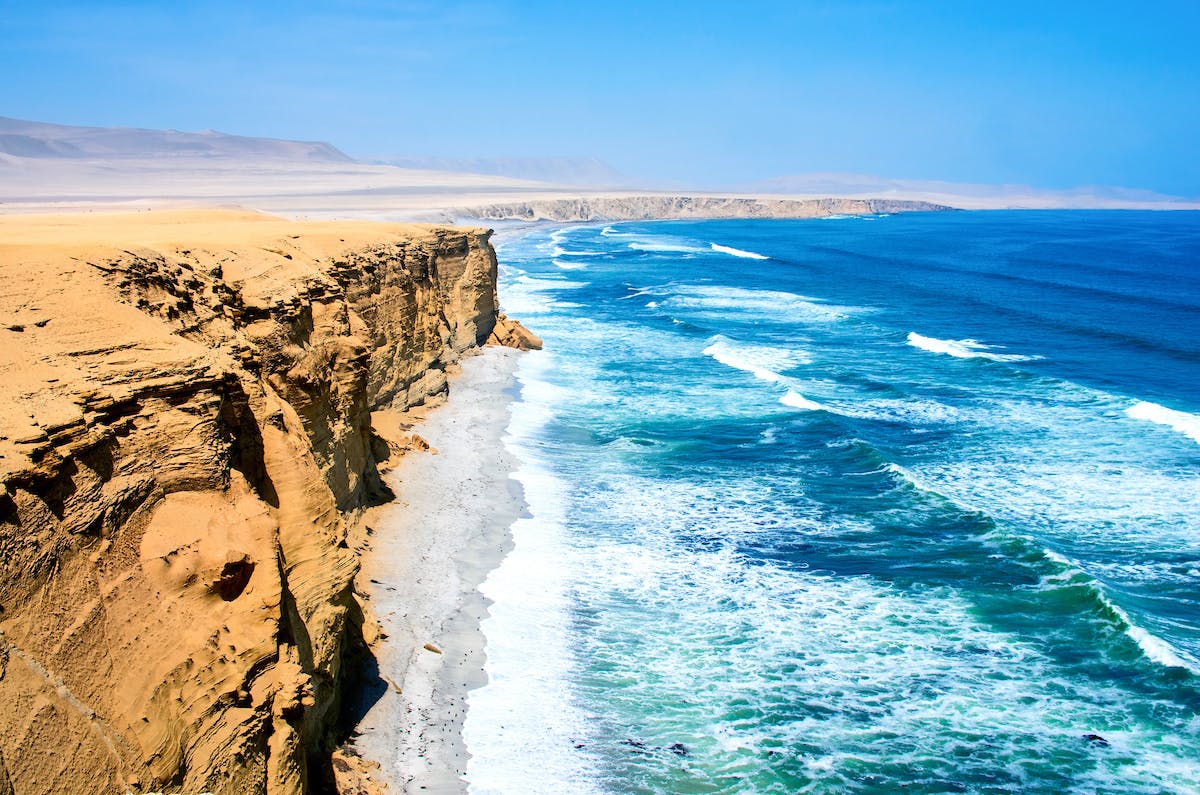On Expedition With Conrad: Atacama and South America’s Pacific Coast
For decades, scholars have debated about the origins of the name Atacama. Some claim it comes from the Quechua word tacama, which means — puzzlingly — “black duck,” or, perhaps more plausibly, from the word tercumen, which roughly translates to “great confines.” Others point to the Kunza word tecama (“I feel cold”), owing to the fact that nighttime temperatures here often dip below freezing point. For practical purposes, however, the mysterious word could just as well mean “very dry place.”
As the world’s driest non-polar desert, Chile’s Atacama is a place of wonder. Less than 0.6 inches of rain fall in this 1,600 km (900 mile) strip of land between the Andes and the Pacific Ocean, and the otherworldly landscape has often been compared to Mars.
Exploring Atacama and coastal South America
Atacama is part of the more than 4,700 kilometers (almost 3,000 miles) that separate the port city of Guayaquil in Ecuador from its Chilean counterpart of Valparaiso, and Silversea’s Conrad Combrink defines this often-overlooked corner of the Americas as a fascinating world begging to be discovered. “Pre-Columbian archaeological sites, mouthwatering culinary delights and spectacular landscapes are but a few of the reasons that make this region so special,” says the senior vice president of expeditions, destination and itinerary management for Silversea Cruises. “From the hustle-and bustle of cosmopolitan cities like Lima and Antofagasta to the solitude of the mysterious Nazca Lines on the arid seaside hills of Paracas and the Andean Plateau majesty of Lauca National Park near Arica, this voyage rewards the curious traveler who values intertwining natural and cultural experiences.”

Fed by the nutrient-rich Humboldt Current, South America’s Pacific coastline also sustains stunning biodiversity, evidenced in places like Peru’s Ballestas Islands or Chile’s Isla Pan de Azúcar. Humpback whales, South American sea lions, Humboldt Penguins, Peruvian Pelicans, marine otters and Inca Terns are some of the fascinating species that benefit from this cold, low-salinity current that flows north along the coast — and many can be seen during a South America cruise.
“The west coast of South America is always one of my favorite expedition destinations. I just love these desert environments. They’re so full of life, culture and natural history,” concludes Combrink.

Exploring South America’s Pacific coastline offers a unique look at a fascinating array of landscapes and ecosystems, from the arid vistas of Atacama to the seaside bird colonies of Paracas. As Combrink suggests, cruising this region is a true journey of discovery.
Ready to experience the natural wonders of South America’s Pacific Coast? Explore the Silversea cruises that visit Chile, Ecuador and Peru.
